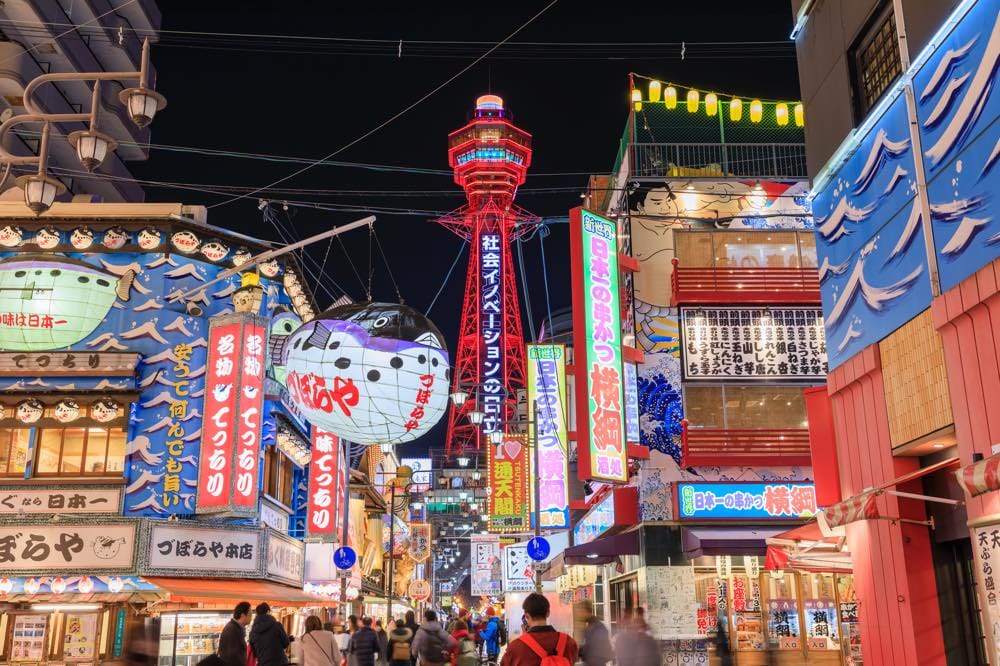Is Osaka worth visiting for history, shrines, and sightseeing?
Discover the vibrant charm of Osaka, where street food, entertainment, and modern city life thrive. Explore hidden gems and plan day trips to Kyoto for a deeper dive into history and traditional culture.

Is Osaka worth visiting for history, shrines, and sightseeing?
Honestly, if you’re mainly interested in history, shrines, and traditional sightseeing, I’d suggest you don’t spend too much time in Osaka itself. Osaka is more of a living, breathing city where people actually live and work—it’s less about the classic historical sites and more about the urban vibe. The cityscape feels quite similar to Tokyo in some ways, so if you’ve already been to Tokyo, Osaka might not offer the kind of unique historical charm you’re looking for.
Sure, Osaka does have Universal Studios Japan and Osaka Castle, which is a famous landmark. But if history and shrines are your main goals, you might find better experiences nearby. Kyoto and Kobe, for example, are just a short train ride away and offer much richer traditional and historical atmospheres. For something less touristy but equally rewarding, I personally recommend exploring Wakayama or Shiga prefectures. These places have beautiful nature, old temples, and quieter spots where you can enjoy a more relaxed and authentic side of Japan.
What if I only have one day in Osaka? What should I do?
If you only have a day in Osaka, I’d focus on the highlights that showcase the city’s unique character rather than hunting for historical sites. Osaka Castle is worth a quick visit—not because it’s an ancient original (it’s been rebuilt a few times), but because the park around it is a nice spot for a stroll. Then, I’d recommend exploring the Dotonbori area to experience Osaka's famous street food and lively atmosphere. Try takoyaki (octopus balls) or okonomiyaki (savory pancake), which locals love. This way, you get a feel for Osaka as a vibrant, working city rather than a museum.
How does visiting Kyoto or Kobe compare for history and shrines?
Kyoto is the classic choice for history and shrines — it’s packed with UNESCO World Heritage sites, old temples, traditional wooden houses, and beautiful gardens. Walking through Kyoto feels like stepping back in time. Kobe, on the other hand, has a mix of old and new with a distinct international flavor due to its port history. While Kobe doesn’t have as many shrines as Kyoto, it offers charming neighborhoods and scenic spots like the harbor and Rokko mountain area. Both cities are very accessible from Osaka (about 15-30 minutes by train), so you can easily make day trips and experience a more traditional Japan.
Are there cultural activities in Osaka that locals enjoy but tourists might miss?
Osaka locals take pride in their food culture and casual, down-to-earth vibe. While tourists flock to Universal Studios or shopping streets, many locals enjoy hanging out in small, family-run izakayas (Japanese pubs) or exploring local markets like Kuromon Ichiba. Also, the comedy scene is big here—Osaka is considered Japan’s comedy capital. If you’re curious about something truly local, catching a manzai (stand-up comedy) show can be a fun and unique experience. These are usually in Japanese, but the lively atmosphere is infectious even if you don’t get all the jokes.
What makes Wakayama or Shiga better alternatives for sightseeing?
Wakayama and Shiga offer a slower pace and plenty of natural beauty alongside historical sites. In Wakayama, you can visit spiritual places like Koyasan, a mountain town with ancient temples and a serene atmosphere that’s very different from busy urban centers. Shiga is famous for Lake Biwa, Japan’s largest freshwater lake, surrounded by castles, shrines, and hiking trails. These prefectures give you a chance to see a “real” Japan that’s less touched by mass tourism. Plus, the locals tend to be very welcoming, and the food—like fresh lake fish in Shiga or seafood in Wakayama—is fantastic.
So, while Osaka is definitely worth a quick visit to experience its lively city life and food scene, if your heart is set on history, shrines, and sightseeing, think about spending more time in neighboring areas that reveal Japan’s rich past and natural beauty in a way Osaka doesn’t. It’s all about what kind of Japan you want to see—urban energy or traditional calm—and luckily, this region gives you access to both!



Comments ()